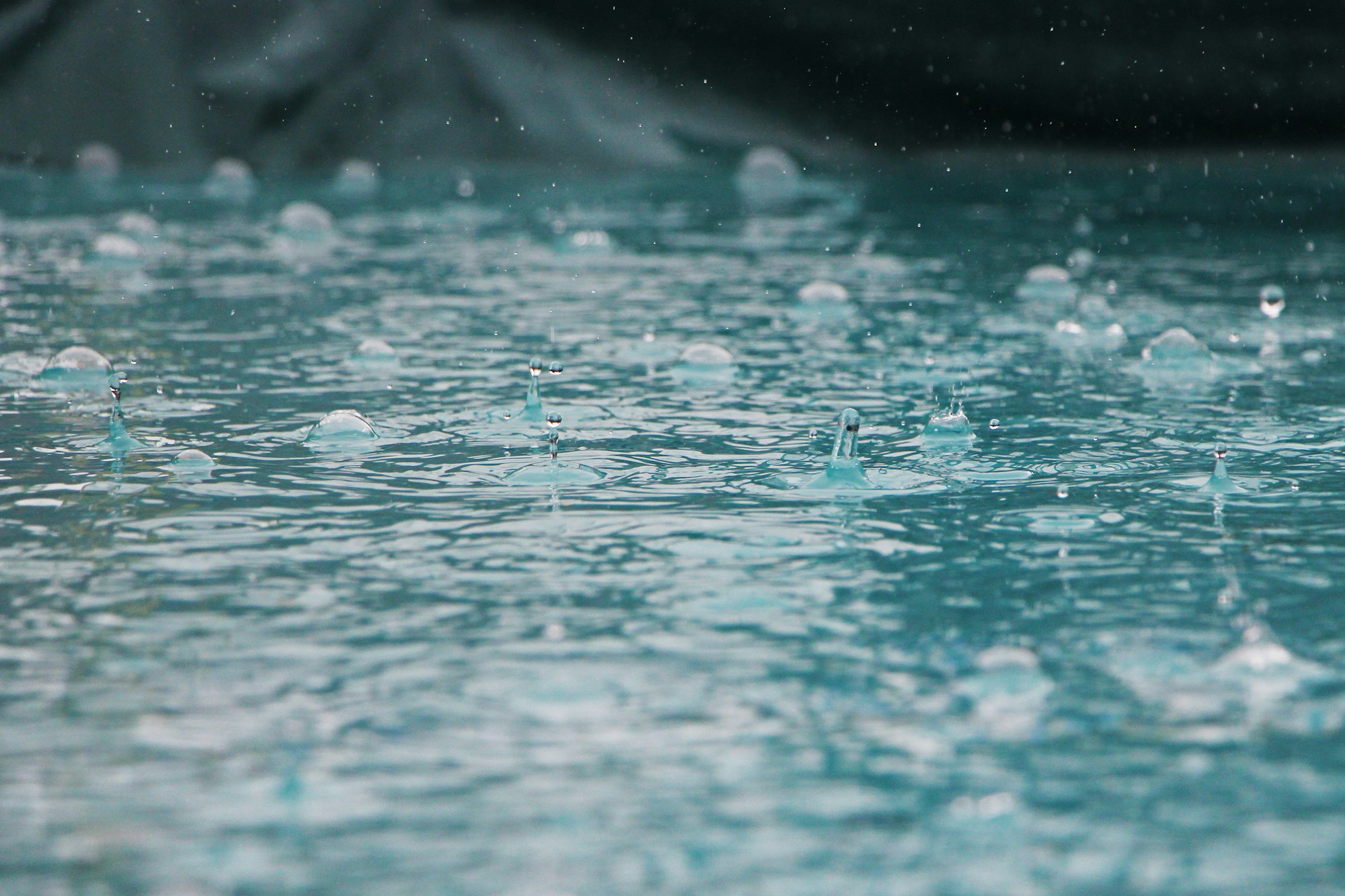How much is an inch of rain?
There's more to an inch than meets the eye.

All of us involved with taking observations and measuring precipitation are accustomed to measuring rain or melted snow. How many of us actually pause to think about what that measurement means in real terms?
Most of the time our measurements involve a few hundredths of an inch, or perhaps an inch or two after one of our summer thunderstorms. We tend to think of rainfall in terms of depth, but remember that water, spread over a surface, also has volume.
A gallon of water weighs 8.329 pounds per gallon at room temperature (70 degrees Fahrenheit). A typical roof (40 x 70 feet) covered in an inch of water would hold 1,743 gallons and would bear a weight of 14,467 pounds. Good thing the water runs off, huh?
An acre of land covered by an inch of water would contain 27,154 gallons and a football field 35,897 gallons. That inch of rain doesn’t sound so insignificant now, does it?
The WeatherWorks website gives all of these examples, plus some others to give us a better perspective. For instance, on August 13-14, 1987, Chicago O’Hare airport received 9.35 inches of rain, enough to fill 57,614 Olympic swimming pools. On August 7-8, 1995, Sidney, Ohio, received 10.75 inches of rain. That’s enough to fill approximately 2.27 billion gallon jugs. On September 1, 2003, Indianapolis, IN, received 7.2 inches of rain, enough to fill around 352 billion bottles of water. An inch of rain in New York City would equate to more than 5.2 billion gallons. That’s a lot of runoff! Now you know why New York City’s sewers are large enough to hold giant alligators (see the movie Alligator from 1980; watch the trailer for some silly fun).
So, where does all this water go? In the US, around 70 percent of the annual precipitation returns to the atmosphere by evaporation from land and water surfaces and evapotranspiration from plants. The remaining 30 percent reaches streams, lakes, or oceans by runoff or by moving through the ground.
The lower 48 conterminous states of the US receive enough precipitation during the average year to cover the States to a depth of about 30 inches, according to the US Geological Survey. For the record, heavy rain is defined as rainfall that exceeds 0.3 inches per hour.
The next time you receive measurable precipitation, you can go to the US Geological Survey’s rainfall calculator and see for yourself how much water actually fell on the area you’re inputting. Using my quarter-acre lot as an example, 1/4-inch of rain equates to 1,697 gallons of water, enough for forty-two 40-gallon baths. Now you know why your lawn turns green after the Spring rains begin.
